#ilocano folklore
Text
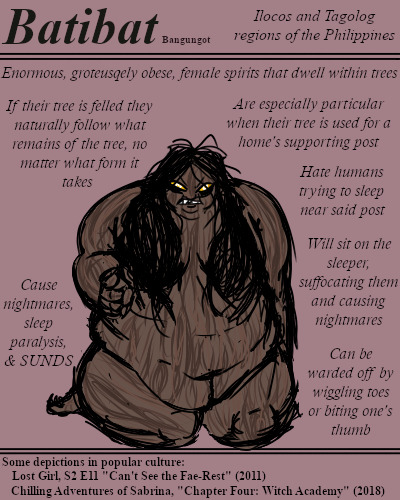
A tree-dwelling demon. Due to her nature, the bangungot lends its name to sudden adult death syndrome and nightmares.
#BriefBestiary#bestiary#digital art#fantasy#folklore#legend#myth#mythology#monster#spirit#batibat#bangungot#tree spirit#demon#filipino folklore#filipino legend#ilocano folklore#ilocano legend#tagalog legend#tagalog folklore
16 notes
·
View notes
Text
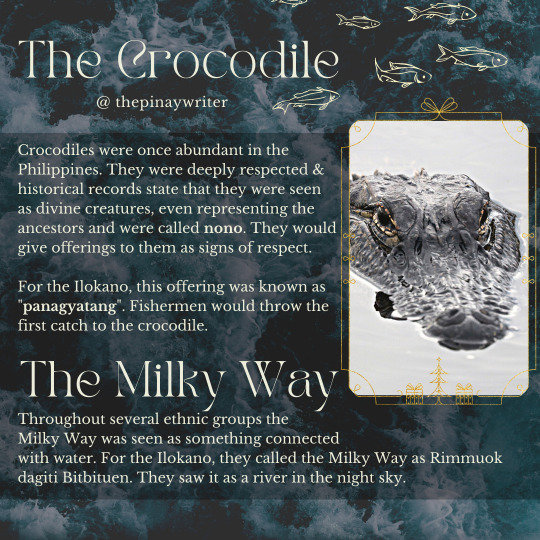

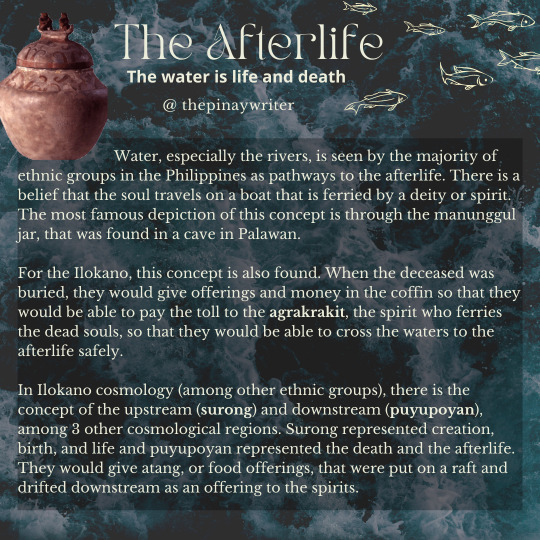
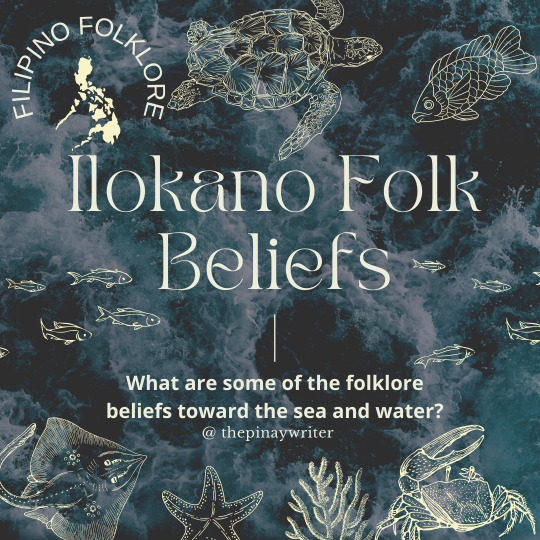
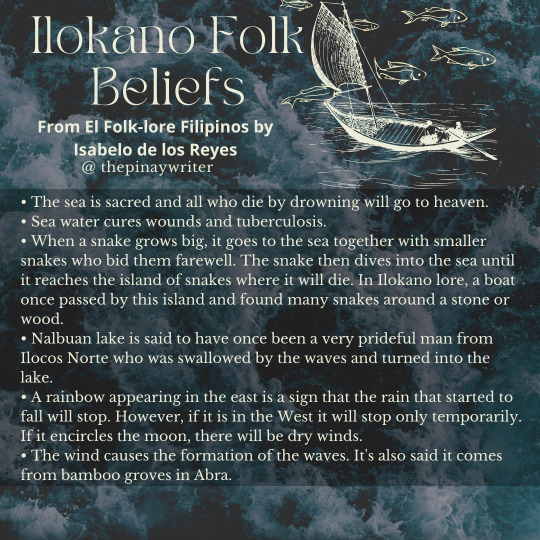
🌊 Water is life. It is death. It represents a cosmological cycle of both in many ethnic groups in the Philippines.
Today we are going to discuss and learn about some Ilokano folklore on the sea and water. From the Ilokano god of the rivers and sea, Apo Litao, to the cosmological beliefs involving the water and sea.
🌿 RECOMMENDED READING:
For more on Ilokano folklore and practices, I highly suggest reading El Folk-lore Filipino by Isabelo de los Reyes and Way of the Ancient Healer by Virgil Mayor Apostol @ virgilmapostol on IG . (Both books which I credit and gained all the info listed here).
The lovely sirena artwork pictured on the second photo is by Sarah DeMonteverde @ ilandtuitles on IG (go follow her because her artwork is amazing!) ❤
FOLLOW ME ON SOCIAL MEDIA FOR MORE!
▪️@ IG ( https://www.instagram.com/thepinaywriter/ )
▪️@ Tiktok ( https://www.tiktok.com/@thepinaywriter )
▪️@ Twitter ( https://twitter.com/thepinaywriter )
▪️@ Blog ( https://thepinaywriter.com)
▪️@ Spiritual and Botanical Shop ( https://hirayabotanicals.com)
#filipino#philippines#precolonial#deity#anito#diwata#pinoy#filipino folklore#folklore#myth#mythology#filipino mythology#filipino myths#philippine mythology#ilokano#ilocano
551 notes
·
View notes
Photo

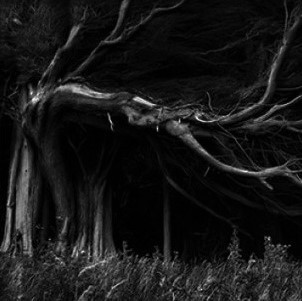
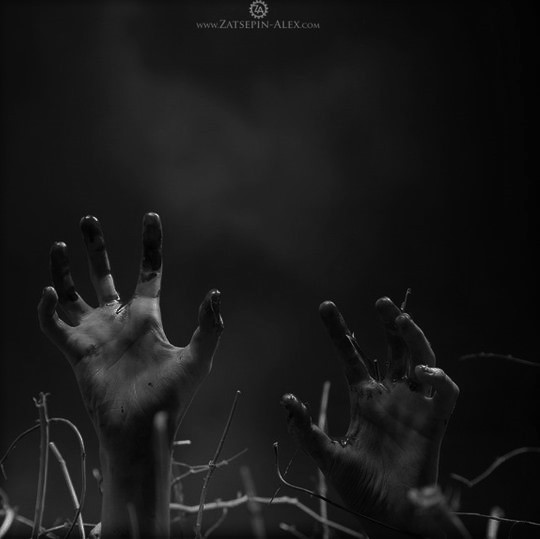

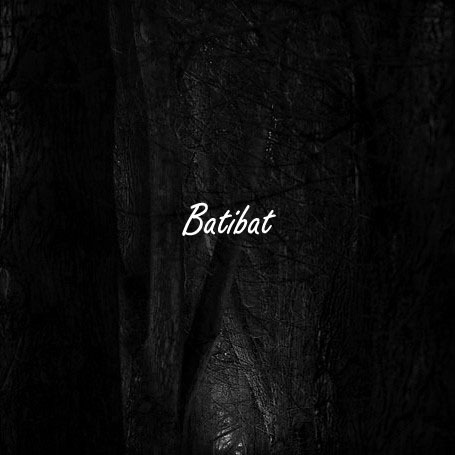

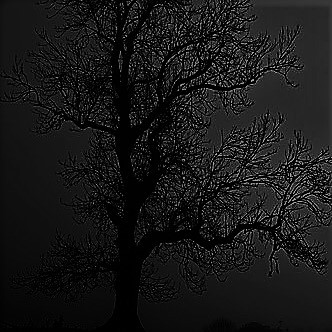


Badass Mythical Women and Creatures → Batibat
In Ilocano folklore, the Batibat is a vengeful demon that causes the Bangungot disease, or the sudden death in sleep. They are reputed to be old, large hags. Batibats are accustomed to living in trees but when they are felled, they migrate to whatever structure their tree turned into. Batibats forbid any humans from coming near their trees but in the circumstance that they do, the Batibats attack the human. Batibats suffocate their victims by sitting on their chests; the only way to ward off Batibats is to wiggle toes or bite thumbs.
#ilocano folklore#ilocano mythology#filipino mythology#filipino folklore#batibat#bangungot#mythedit#mythology moodboard#mythology aesthetic#mythology#mine#myth#fyeahmyths#fyeahmythologies#areswrath#moodyhues#bmwc*#bmwac*
48 notes
·
View notes
Photo

The Batibat [Filippino mythology, Ilocano mythology]
The Batibat (or also Bangungot in Tagalog folklore), are mythological creatures from Philippine folklore. More specifically, from the myths of the Ilocano people. These monsters are depicted as obese, extraordinarily fat humanoid creatures. They are a kind of tree spirits, and they are always female.
The Batibat make their homes in trees, and cause trouble when their trees are cut down (which is understandable). If the logs from their tree are used in the construction of a house, the Batibat will start to inhabit and haunt that building and it forbids humans from sleeping near the wood that used to be its tree.
They accomplish this by entering the victim’s dreams, causing nightmares and sleep paralysis. Should you find your home haunted by a Batibat, and the monster is in your dreams, then try to wiggle your toes or bite your thumb. These actions may cause you to escape the dream and wake up.
(image source: mfr.fandom.com)
#mythology#world mythology#folklore#mythical creatures#forest spirits#tree spirits#nature spirits#monsters#creatures#lore#fantasy#DM#folktales#folk tales
36 notes
·
View notes
Note
oh?? would you be willing to talk more about batibat?
i mean, i know it only from a couple of stories; it's a filipino monster (ilocano specifically; there's a tagalog one with a different name) that lives in a tree, and if you mess with the tree (sleep near it, or cut it down, or w/e) the batibat will come sit on you while you're sleeping, giving you nightmares and suffocating you.
it's not particularly like, big & complicated & symbolic or w/e, but apparently there's some horror movie where it functions like a christian demon and possesses ppl??? and the grimdark sabrina reboot made a character (played by... yup, a white woman) a batibat, but she does this rly long game of manipulating ppl's dreams and driving them towards madness, and like, seeks out new victims or w/e. makes demon deals??? Not The Lore or w/e.
i mean i get why that version is more interesting/dramatic for ur typical horror movie, but the actual batibat is just. idk it's just vibing u kno. yeah it kills ppl but it's just in its tree i don't think it needs to be made into a big scary demon. there's aswangs for that if u rly want them. other stuff too.
EDIT oh also u can escape from a batibat's nightmare if u wiggle ur toes. i think this is fun.
also also it is apparently a like, folkloric explanation for ppl dying in their sleep, which u kno, not super fun, but a lot of myths & so on have stuff like that behind them, we will not focus on that we will focus on the myths for now,
#something something the westernization of a perfectly good monster something#i'm just mad abt that. why do white ppl need to take a thing and change it to be unrecognizable.#anyway i just wanted to use them for my new sitcom nightmare story bcos a. i think it's a fun word to say#b. i just like to put! filipino stuff!! in stories!!!#and c. since it's a sitcom there's so many fun ways to use the tree i think#death mention
11 notes
·
View notes
Note
I know sleep paralysis is hardly paranormal but the scariest thing that happened to me was during sleep paralysis.
I fell asleep at the living room (me and my brother were watching tv) I open my eyes, I can't move so I look at the window that stays right above the couch and there's someone opening it, when it's completly open I see a woman very very thin with long legs wearing a patient gown coming in (and the way she did was so terrifiying, she put her legs first and then her arms and finally her head), she was reaching for me like she wanted to strangle me but my brother notice I was in panick and woke me up with a very gentle slap on the face
In Ilocano and Tagalog folklore, theres a demon called Batibat that likes to sit on you and suffocate you in your sleep. This is what some people believe to cause sleep paralysis.
5 notes
·
View notes
Text
Caos references episode by episode
Chapter Five: Dreams in a Witch House
The episode title gets its name from the H.P Lovecraft story The Dreams in the Witch House, about a man who rents an attic apartment in a house that once harbored a person accused of witchcraft but disappeared from jail in 1692. The man has bizarre, disturbing, and increasingly violent dreams each night.
The demon the attacks the spellmans Batibat, is a demon in Ilocano folklore that is also called Bangungot, in Tagalog folklore meaning “nightmare” in Tagalog.
During Sabrina’s dream wedding Harvey quotes the bible verse Exodus 22:18 “Thou Shalt not Suffer a Witch to Live”
In Ambrose’s dream he quotes Shakespeare's Hamlet saying "Alas poor, Ambrose, I knew him well."
The window above Zelda is a recreation of an infamous window from the movie Suspiria. Suspiria is a 1977 horror film about a ballet school that houses witches.
Zelda’s entire dream is a reference to the story in the book of genesis Cain and Abel. The story follows two brothers who are the first two sons of Adam and Eve. Cain, the firstborn, was a farmer, and his brother Abel was a shepherd. They both made sacrifices to God but God favored Abel's sacrifice instead of Cain's. Cain then murdered Abel, and when God asks Cain where Abel is Cain responds with “am I my brothers keeper.” When the dark lord asks Zelda where Hilda is she responds with “am I my sisters keeper.”
6 notes
·
View notes
Quote
No. Teresa had never wanted anything like that from anyone. The things Teresa wanted from people were easy to know, easy to give: a working knowledge in Ilocano and any of the indigenous languages of the north, but especially Ibanag, considering where they were; a quick study in the use of old Armalite and AK-47 rifles, American made M-16s or M-14s, sometimes the rare Russian-made one, sometimes even a pilfered Gararand circa WWll; the ability to put a knife in the chest of a mayor or landlord on a regional bus and walk away with no injuries, minimal witnesses; a personal archive of good jokes, creation myths, local folklore from your particular town or village, or at least your parents' local town or village, since sometimes there would be a cadre from suburban Manila who barely even knew the basic myths of Apolaki and Mayari; a commitment to being, not brave, not even honest- Teresa was neither naive or cruel enough to expect bravery or honesty from people, not all the time, not even some of the time- then, accountable. Responsible.
from America is Not the Heart, by Elaine Castillo
#america is not the heart#elaine castillo#pinay tag#this whole couple of pages is great but i can't type it up here word for word
5 notes
·
View notes
Note
Hello, I am planning on writing about mermaids. But I don't want to romanticize it or anything. I want to write how it is according to myths. I found a load in books and online, but just to be sure, I was wondering if you know anything about them? Or some details, maybe? Thank you!
Can I ask you something about mermaids? I know basically nothing about them, aside for the fact that different cultures see them in different ways. Like… I would like to know HOW they are seen in those different cultures. (½)
Does it change their attitude? Where they live? Are they always “bad creatures” or not? And last.. What about selkies? (I’m sorry if this is not very clear but english is not my mother tongue) (2/2)
Hello!
So we had two asks that were pretty similar about merfolk and since one was anonymous we’ve answered them both here. Hopefully, neither of you mind.
In Slavic culture the beliefs around mermaids vary. The moost used Russian word that is generally translated as “mermaid” is “rusalka” (русалка); it is present in different Slavic languages. Many scholars also believe that the Ukrainian and South Slavic “mavka” or navka (мавка/навка) has many similarities with rusalka, and can even be considered the same thing. Another word that can be used is “pharaonka” (or faraonka) (фараонка) – this one comes from one of the beliefs of their origin – in some regions it is believed that mermaids originated from the pharaoh’s army after they drowned in the Red Sea (Book of Exodus).
The word “mavka” or “navka”, on the other hand, is usually connected to Proto-Slavic “nav’” (навь) – “death” or “the dead”. As for the word “rusalka”, its origin isn’t exactly clear – some think that it comes from the Roman festival Rosalia (mostly basing it on one of the old Slavic festival “rusal’naya nedelya”, rusalnaya week), others connect it to different words around water – streambed “ruslo” (русло), or dew “rosa” (роса), or even the names of the rivers. Yet another scholar finds a connection between the name and the most common hair colour for the creatures – fair (rusyi – русый – in Russian).
While “rusalka” is one of the common translations for the mermaid, in many ways they’re more like nymphs – sometimes they’re believed to be wood sprites. Still, in many regions there’s a clear connection between rusalkas and water, and it is one of the popularized and culturally accepted translations.
Slavic mermaids are usually mischievous or even evil young women or girls. They lure young men into water and then drown them or tickle them to death (which could have been a euphemism of a sexual encounter, but it is not clear at this point); alternatively, they help young children who got lost in the woods or those people who help them.
Beliefs on where they come from varies: in some regions, as mentioned above, they’re the remnants of the pharaoh’s army, in others they’re dead young girls that died unmarried, or that committed suicide (usually by drowning) – the latter was popularized by one of the Gogol’s classic stories (although, he never uses the word “rusalka”). Some say witches become mermaids when they die, others that witches can’t become mermaids, it can only be young dead girls.
As for appearance, it can vary as well. Usually they’re described as young women with unfastened green, blond or fair hair wearing white garments, like sarafans. They also can be imagined as young girls. In other instances they’re scary old hags with huge breasts. Unkempt hair seems to be a very important attribute that is present in any description.
Their character vary in different regions. In Ural, rusalki sit underwater all the time. If we go south, we find out that the creatures are generally outgoing and come out of water for rusalnaya week to dance in circles not only with each other, but with other people as well. It’s not dangerous to contact them in general, but one shouldn’t go in water with them. Sometimes certain weeds and herbs are used to ward them off. Summing it all up, Slavic mermaids have a definite connection with death and supernatural and can be quite dangerous, but it’s possible to communicate with them without harm to yourself.
So, for the Philippines with it’s 7641 islands, many regions, many influences from other countries across time— there’s bound to be a wide variety of merfolk. Different places will have different stories. Some merfolk will be a bit more like half fish-half human. Others, especially those closer to inland waterfalls or where the rivers have strong undercurrent, the merfolk look almost exactly like humans. Sometimes they have gills or a strong fishy smell. Others are more like fish with scales on their skin, two legs and two arms, webbed feet and hands, as well as a fish head.
The terminology itself is… it depends who you ask. Some would say there is a hierarchy of merfolk and things like the Catau/Kataw are stronger because they also have abilities to control the waves, storms, the water as opposed to the Siyokoy and Sirena. Others would say that these are just different ways of calling merfolk and the different attributions each culture gives them (in which they don’t exist together in the same oceans)— Catau would be used by the Cebuano, Siyokoy and Sirena is more used by the Ilocano and the Tagalogs, Ugkoy is more used in Waray but I also had a friend who is Waray and calls them Catau.
Like other beings in the Philippines, they generally don’t mean to harm humans. Often, however, they do kidnap humans because they want to marry them or take them to their homes. They can also be rather generous with giving people gifts of gold jewelry and precious stones.
In western folklore they’re seen either as a good omen or an extremely bad one, tempting sailors to join them to be their husbands. Of course since humans can’t breathe water this ultimately means their death.
Selkies are super neat. They are seal women, spending most of their time on the water while occasionally taking off their seal skin on land to sun themselves. If a man finds their skin and hides it, he can take a selkie to be his bride and there is nothing she can do to stop him. However, should she ever find her skin, she will immediately take it and return to the sea, never to be seen again.
Etymologically, selkie means “seal”; in some regions they’re perceived as a creature other than mermaid, but we put them together because they share a lot of features with European mermaids, as well as mermaids around the world. Also, in many stories selkies are never referred to as such: they’re just called maighdean mara (“maiden of the sea”) – or, technically, the term that can be as easily used describing a mermaid or other water sprite.
One interesting feature of selkies is that they’re often connected to certain Irish families. Descendants of these supernatural creatures are either disfigured in one way or the other, or have exceptional prowess in some areas, especially stuff connected to the sea (seafaring, fishing), or sometimes both. They also might have a prohibition against killing seals, or have a physical reaction in response to seal-killing – when seals are killed on the shores of Inishowen, people in the village of Málann reportedly get nosebleeds. In many cases, the “supernatural” abilities are those that give the families advantage in the area or give them important roles in the community.
By the way, not only the Irish prescribed supernatural water-connected ancestry to their noblemen: another prominent example is the legend of Mélusine, the supernatural female ancestor of House of Lusignan. Although, giving any dynasty supernatural ancestry has always been a popular way to legitimize them to the common people; but that’s a different and a very long story.
In this sense the legends and folktales about selkies can be connected to the legend of the birth of Meroveus, the founder of Merovingian dinasty, although it’s more similar to the Irish legend of The Man Who Never Slept – here we deal not with sea maiden who are brought in to the human family, but the fruit of sexual encounter (normally without consent) between a woman and a supernatural water-dwelling being.
You can find much more about selkies, Meroveus and Mélusine, and also the connection between legends concerning them and societal changes of the time in the article “On Mermaids, Meroveus, and Mélusine: Reading the Irish Seal Woman and Mélusine as Origin Legend” by G. Darwin.”
-the Chorus
#selkies#mermaids#slavic#russian#western#philippines#rusalka#navka#irish#melusine#meroveus#Katawa#waray#siyokoy#sirena#ugkoy#rusalnaya#merfolk#pharaonka
142 notes
·
View notes
Text
In the kitchen making tea, something comes running downstairs. I usually make friends with monsters in my dreams but this thing was mindless and angry. I go to meet it like I usually do but I only realize my mistake too late as I'm trapped, unable to move, no body left for me to move. It's screaming, its face inches from mine, its eyes are hollow and its gaping mouth threatens to swallow me whole. I try to pull out of the dream and I find my body paralyzed
I don't know whay they tell you about sleep paralysis but the line between dreams and reality become blurry. You cannot discern the difference. The furnace kicks on and I'm convinced that its noise is a scream, that the entity is here, screaming at me. I scream, it feels like I'm really screaming but there is no sound. I hear my own scream through the veil, I hear it muffled because it isn't real.
My only way out is my mother's trick. In Ilocano folklore, there is a spirit that causes sleep paralysis, and at times, death in the sleeping. If you can catch it, you can wiggle your toes and the batibat/bangungot is warded away.
I wiggle my toes, and I can feel it working. I think because they're so far from your brain they are hard to control; that concentration forces you back into the flesh, it forces you back into your body. I wiggle my toes like my life depends on it because it honestly feels like it does. It's like crawling back into my body out of a tar pit.
You don't wake up so exhausted as when something enters your dreams uninvited. I am exhausted but I can't go back to sleep, I know there are still parts of the thing waiting for me.
0 notes
Photo

#Inktober day 14 - The Batibat or Bangungot is a vengeful demon found in Ilocano folklore. These demons were blamed as the cause of the fatal nocturnal disease called bangungot. A batibat takes the form of a huge, old, fat woman that resides in trees. They usually come in contact with humans when the tree that they reside in is felled and made into a support post for a house. This causes them to migrate into holes found in the post. The batibat forbids humans from sleeping near its post. When a person does sleep near it, the batibat transforms to its true form and attacks that person. It sits upon the chest of its victim until he suffocates. To ward off the batibat, one should bite one's thumb or wiggle one's toes. In this way, the person will awaken from the nightmare induced by the batibat. - #inktober2017 #Horror #monster #demon #inking #drawing (at Minneapolis, Minnesota)
2 notes
·
View notes
Photo

#Repost @kimrequesto ・・・ In honor of USF Kasamahan's 44th Barrio Fiesta and the lovely ladies who will be performing Ragragsakan tonight and tomorrow, I share my last Ragragsakan photo. They're sold out tomorrow night but if you can, they have a show at 7pm tonight at Presentation Theater on 2350 Turk Blvd, San Francisco, CA 94118. Also, if you know the lyrics sung during the dance feel free to sing along. The word “ragragsakan” is an Ilocano word which means merriment. Originally choreographed by the Ramon Obusan Folkloric Group, this dance was created through the inspiration of Kalinga maidens balancing labba baskets placed on their heads as they carry the things the people need during merrymaking, which usually takes place during triumphant returns of headhunters or successful peace pacts between rival tribes.
10 notes
·
View notes
Photo


Filipino Mythology Week → Day 1: Gods (of the Ilocanos)
“Gods are great . . . But the heart is greater. For it is from our hearts they come, and to our hearts they shall return” ― Neil Gaiman
#fmw*#filipino mythology#filipino folklore#gods#ilocano#kabunian#apo langit#neil gaiman#myth event#mythology#my edit#mythedits#myth meme#myth aesthetic#immortalmyths#fyeahmyths#myth edit#mythedit#philippine mythology#philippine folklore
255 notes
·
View notes
Photo

2017 Inktober, Day 3 . The Batibat (or Bangungot) is a vengeful demon found in Ilocano folklore (Philippines). These demons were blamed as the cause of the fatal nocturnal disease called bangungot. A batibat takes the form of a huge, old, fat woman that resides in trees. They usually come in contact with humans when the tree that they reside in is felled and made into a support post for a house. This causes them to migrate into holes found in the post. The batibat forbids humans from sleeping near its post. When a person does sleep near it, the batibat transforms to its true form and attacks that person. It sits upon the chest of its victim until he suffocates . There will be a new illustration every day of October in celebration of Inktober! This year I am drawing female ghosts, monsters, and demons from around the world. . . #Inktober #inktober2017 #inkdrawing #folklore #batibat #nightmare #tree #treespirit #demons #darkfantasy #drawingmonsters #illustration #drawing #art #sketchbook #horror #monsterwoman #monster #monthofart #artwork #artistsoninstagram #instart #treemonster
#inktober#treespirit#darkfantasy#nightmare#instart#art#drawing#monthofart#folklore#demons#sketchbook#illustration#batibat#artistsoninstagram#artwork#monsterwoman#drawingmonsters#inkdrawing#inktober2017#tree#horror#treemonster#monster
1 note
·
View note
Text
BINALONAN, PANGASINAN
Binalonan (Pangasinan: Baley na Binalonan; Ilocano: Ili ti Binalonan) is a 1st class municipality in the province of Pangasinan, Philippines. According to the 2015 census, it has a population of 54,555 people.
At present it is becoming one of the province's top producers of rice grains (palay) and mangoes. The town is known for its rich history rooted in oral traditions of folklore. Its land area is 8,400 hectares.
One of Binalonan's natives is the Filipino-American writer Carlos Bulosan, who wrote brief descriptions of the town's history and people in his semi-autobiographical novel entitled America is in the Heart. The town has a memorial and street named after him just north of the municipal hall and town market. It is also the hometown of Evangelina de la Cruz Macaraeg Macapagal, spouse of 9th President Diosdado Macapagal, and mother of 14th President Gloria Macapagal-Arroyo
0 notes
Photo










Filipino Mythology Week → Day 3: Mythical Creatures (of the Ilocanos)
“Every creature was designed to serve a purpose. Learn from animals for they are there to teach you the way of life. . . Much of human behavior can be explained by watching the wild beasts around us. They are constantly teaching us things about ourselves and the way of the universe, but most people are too blind to watch and listen.” ― Suzy Kassem
Special thanks to these beautiful angels: @nueromancer84, (x) (x)
#fmw*#filipino mythology#filipino folklore#philippine mythology#philippine folklore#mythical creatures#ilocanos#allawaig#batibat#litao#kibaan#tirtiris#suzy kassem#myth event#mythology#my edit#mythedits#myth meme#myth aesthetic#immortalmyths#fyeahmyths#myth edit#mythedit
65 notes
·
View notes